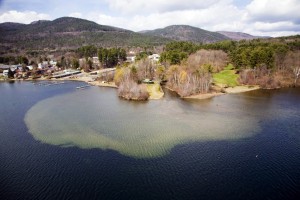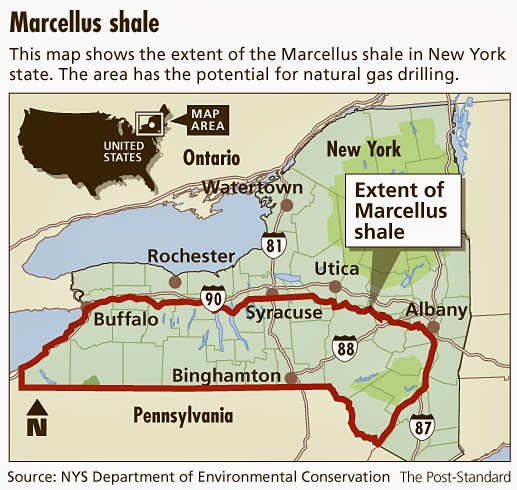Hydraulic Fracturing, or hydrofracking, is a controversial form of energy extraction that is
beginning to gain popularity throughout the nation. Using a high enough
pressure, a collection of chemicals can be pushed through the Earth,
cracking shale and releasing pockets of natural gas that can then be
used as fuel. New York State rests atop the Marsellus Shale, a massive
reserve for natural gas. While Hydraulic fracturing would mean a more
energy independent New York, there is a concern that fracking could
negatively affect the water supply in the Empire State. Two major New York
watersheds exist within the Marsellus Shale. This past year, the New
York State Assembly put hydrofracking in a moratorium state, meaning
that for another year, hydrofracking will be banned.
This is the third time the state government has issued this ban.
While
this means that hydrofracking’s usefulness will not be reevaluated until later in
2014, there still remains an active debate in the state on the part that
hydrofracking could play in the lives of New Yorkers. Lobbyist groups
from both sides have stated their cases in the Assembly and Senate, but
there are also farmers and business groups that have voiced their
support for and against hydraulic fracturing.
• What is Hydraulic Fracturing, making reference to Gasland and other sources.
• How these sources on hydrofracking have influenced and changed the minds of New Yorkers on fracking.
• Why groups of farmers have been in support of fracking even when presented with the potential downsides.
• Profiling anti-fracking groups and organizations and the work they are doing.
• What pro frackers have said in the face of evidence such as Gasland and other sources.
• Findings from the DEC and the Department of Health.
• What ripple effects could set in the state if fracking is allowed (i.e. wildlife affected, water)
• The chances of the moratorium being lifted in 2014
• What anti fracking groups will do in the meantime while the moratorium is in effect.
• Conclusion
Four Images:
Map of the Marsellus Shale
http://asnews.syr.edu/newsevents_2012/releases/Project_SWIFT_Hydrofracking.html
Diagram of the Fracking Process and Fracking Drill
http://www.citizenscampaign.org/campaigns/hydro-fracking.asp
Image of Protesters at the Well in Albany, NY
http://www.timesunion.com/local/article/Fracking-foes-push-drilling-ban-2681557.php
Farmers Rejecting Fracking Ban
http://www.syracuse.com/news/index.ssf/2013/12/ny_farmers_reject_anti-hydrofracking_position_at_farm_bureau_meeting.html









 "Offshore Wind: State by State Analysis." Oceana, 2012. Web.
"Offshore Wind: State by State Analysis." Oceana, 2012. Web. 
















